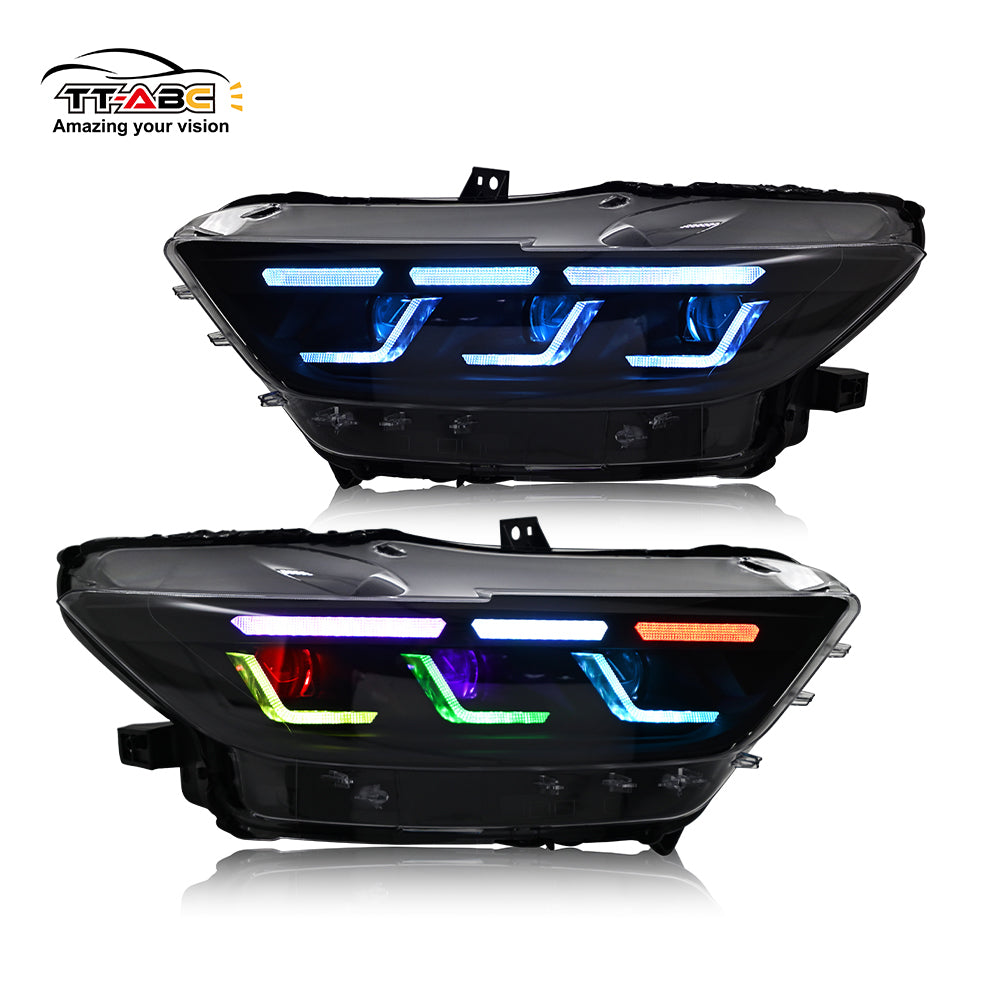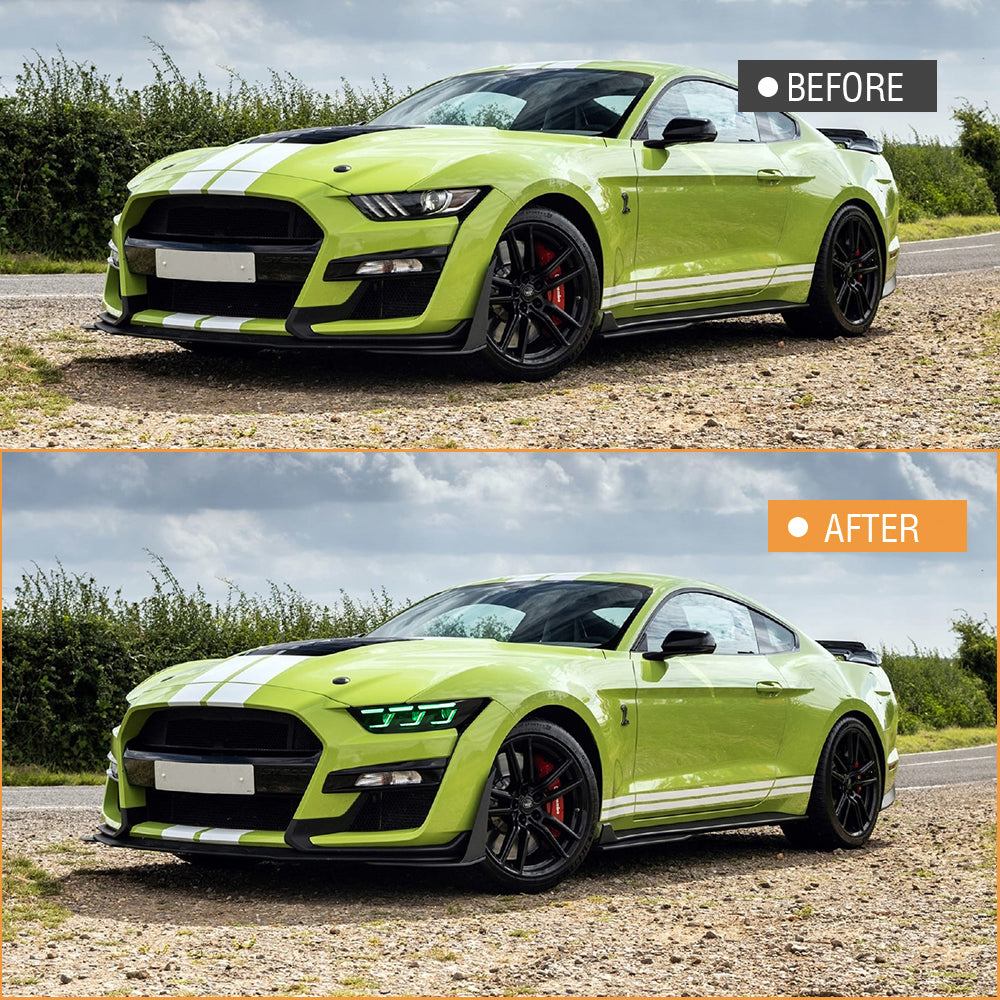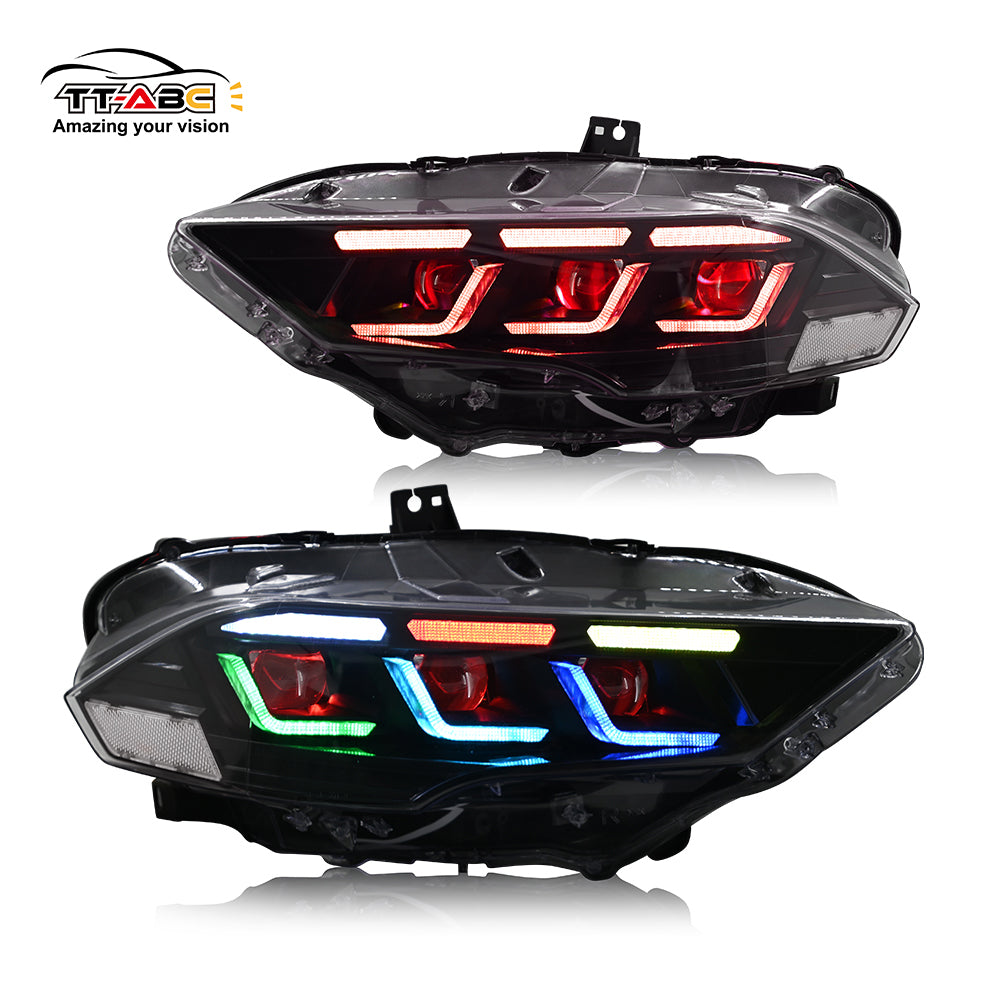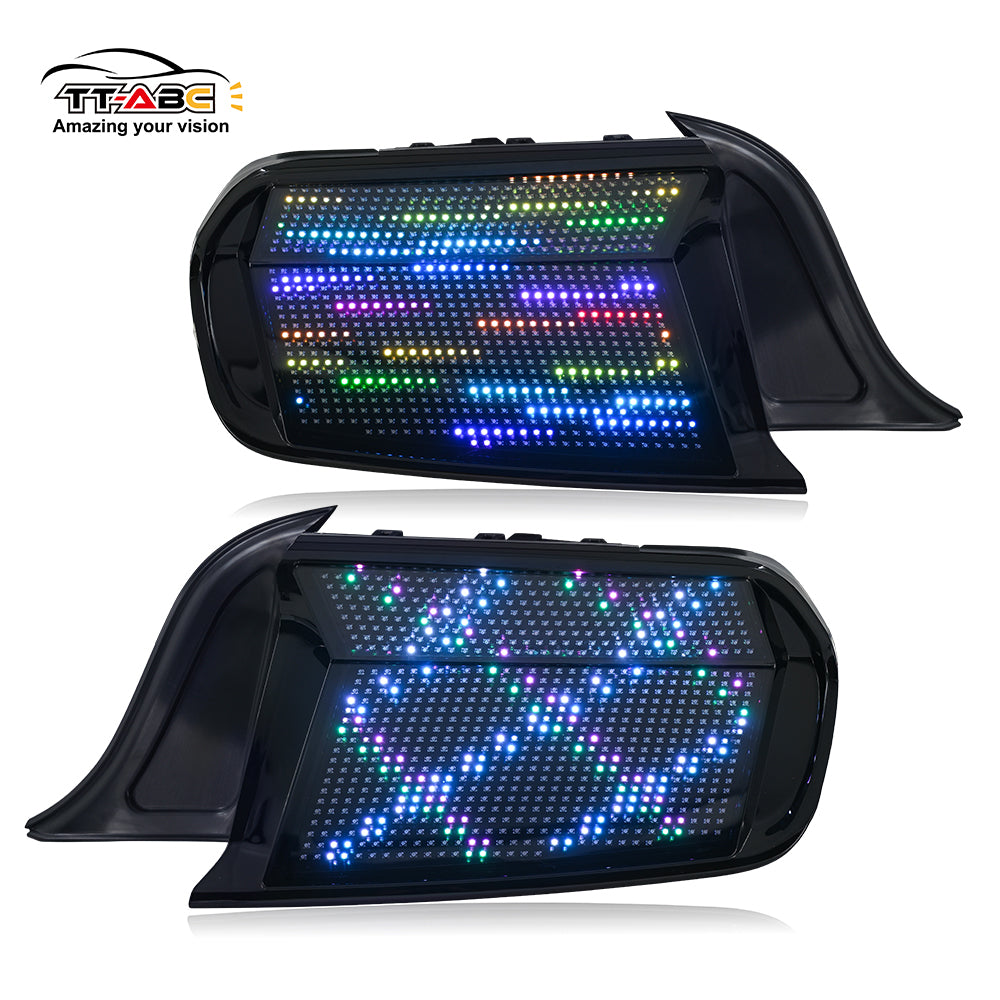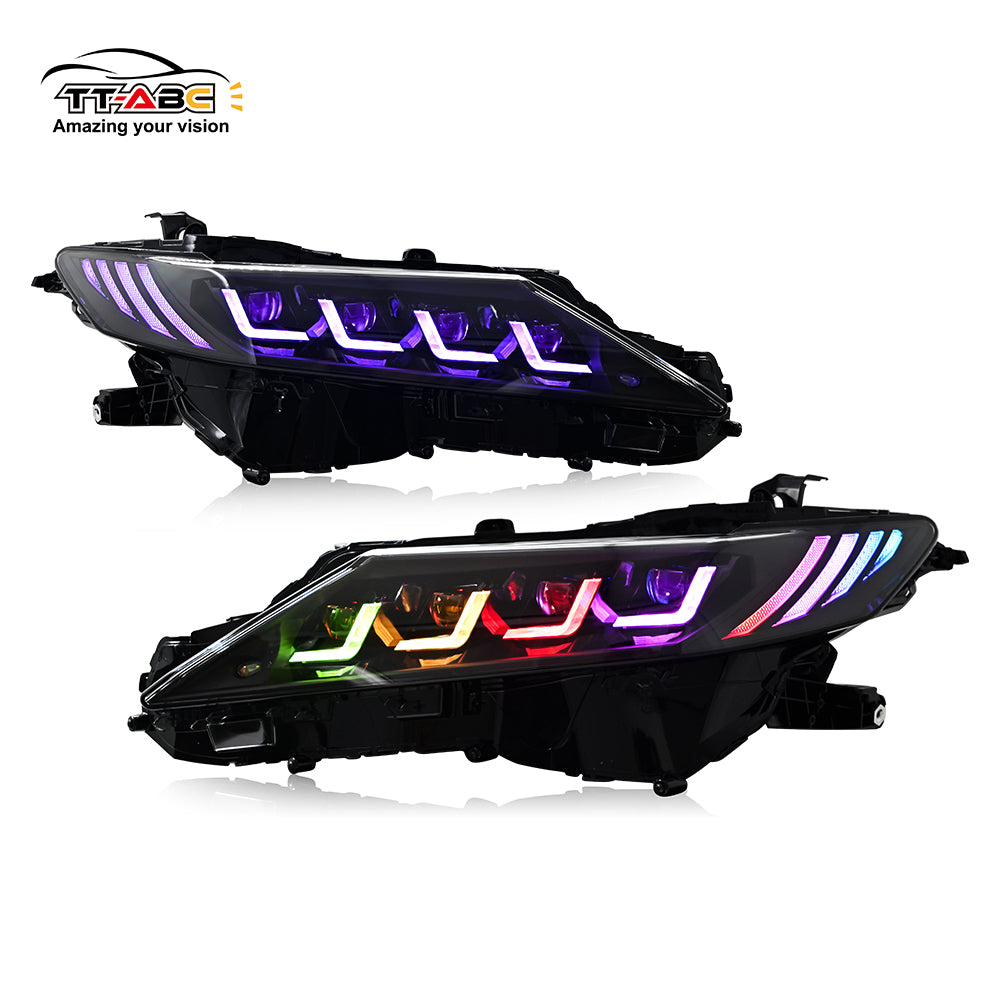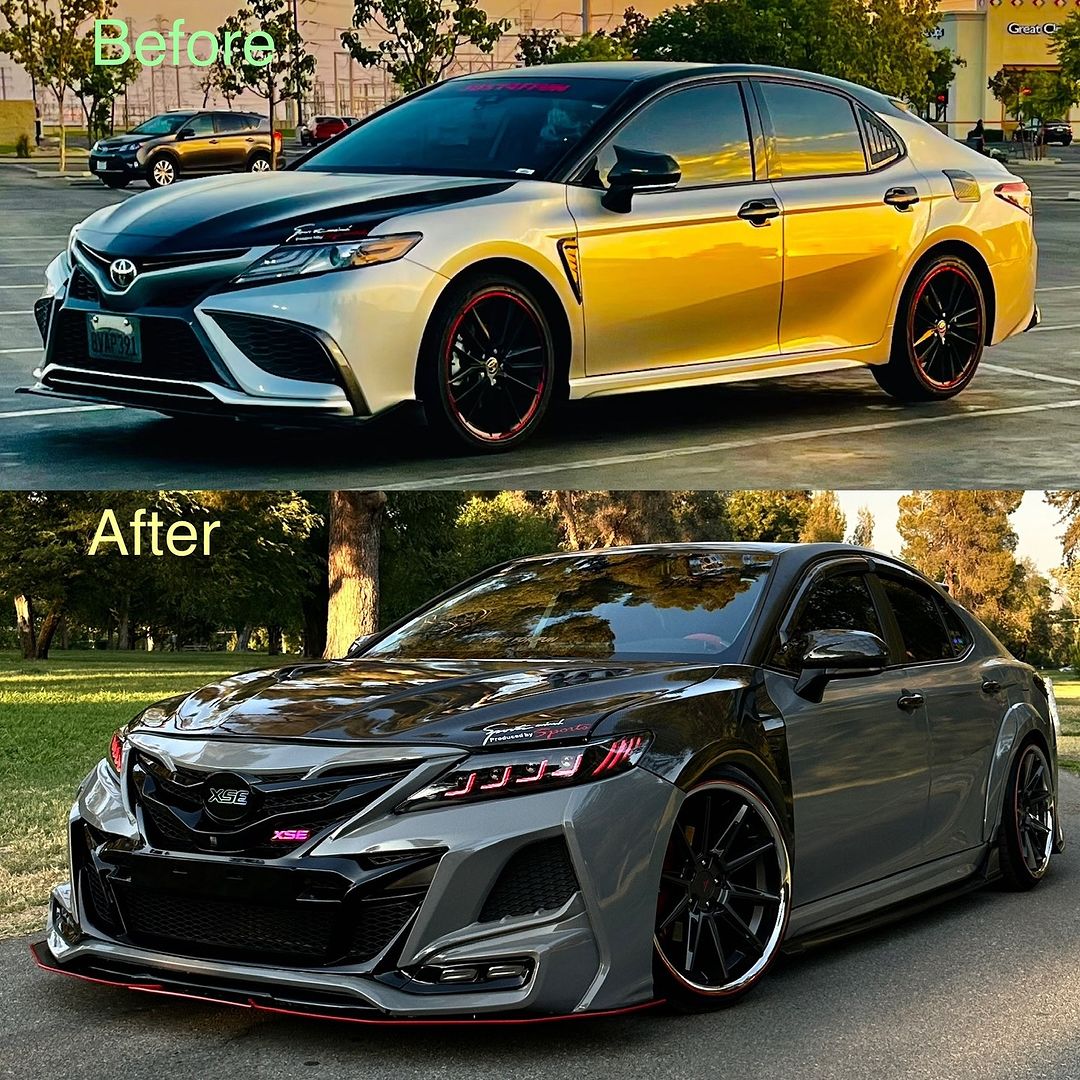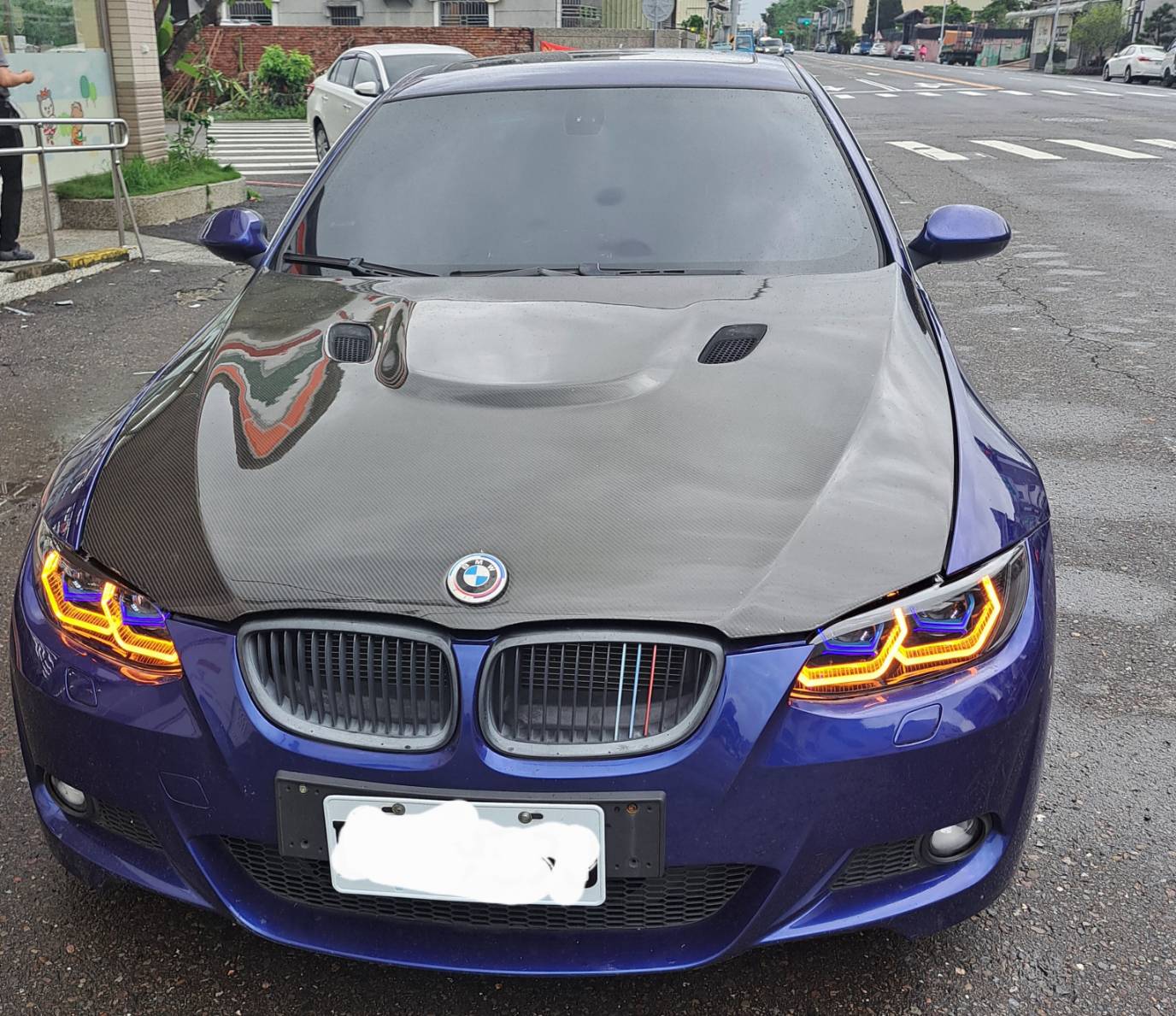Toyota has just unveiled its latest version of the Camry, the ubiquitous four-door sedan now in its ninth generation since it first hit the market more than 40 years ago in 1983. The latest Camry, launched in 2018, is the edgiest-looking model ever and sportier than any Camry before it - so which direction will Toyota go with its new 2024 model? Despite the automaker's own admission, the latest midsize Toyota is a substantial revision over the current model, but it's made some significant leaps forward, including a lineup of pure hybrid powertrains, new interior displays, and sleeker styling. We've placed the new Camry alongside the outgoing version to highlight its biggest differences inside and out:
8th Gen Toyota Camry - side view

After several years of refinement, when the car arrived in 2018, it was surprisingly sporty for a Camry, which is remarkable. But in five years, it's become almost pedestrian if you see hundreds of thousands of these cars on U.S. roads. Viewed from the side, the upcoming Toyota Camry blends expressive body lines and lights with an upright traditional rear end and an almost blocky traditional sculpted hood line. It's unabashedly a sedan, although it looks more interesting than any Camry before it.
9th Gen Toyota Camry - side view

This view most highlights how similar the undersides of the new Camry and the old Camry are—just look at the side doors and roofline. The 2024 and 2025 Camry are essentially identical, a classic sign that the two vehicles share an underlying body structure. That's not to say Toyota doesn't hide the recycled TNGA bones well - despite the familiar shape, the new Camry looks sleeker on the outside thanks to some clever visual tricks: thinner taillights, chamfered bumper corners, The sunken hood and decklid front and back do a lot of heavy lifting to tighten the look. The more rounded surfaces blend nicely with the still-sharp bodyside creases, and it looks like the old Camry XSE's two-tone paint (with a black roof) is also retained as an option on the new model, as you can see in the photo below.
8th Gen Toyota Camry - front view

If the appearance of the old Camry looks a bit ordinary, its nose is anything but ordinary. Toyota offered two basic styling packages for the previous-generation Camry, with the sporty SE and XSE models featuring the fancy grille setup pictured here, while the more conventionally styled LE and Wide grille, no extra corner air intakes. Put aside familiarity again, and think back to 2018: It's jaw-dropping to see a Camry (hybrid or otherwise) with its nostrils so completely covered by a grille that it would make the Porsche 911 GT3 blush. Of course, much of the black plastic mesh is actually enclosed (for smoother aerodynamics, and let's face it, the Camry's engine doesn't need that much cooling), but the look is undeniably bold for a midsize sedan.
9th Gen Toyota Camry - front view

before, the 2025 Camry can be had with one of two separate front-end designs, again divided into LE/XLE and SE/XSE lines. However, there is slightly less differentiation than before, with both variants actually sharing the same basic appearance. Only the details have changed. This means both LE/XLE and SE/XSE versions have the large C-shaped corner vents seen on the XSE, as well as thin upper grille slots and larger lower center air intakes. However, the corner air intakes on the LE and XLE are not as wide, and the sportier mesh pattern on the center grille pictured above is swapped out for more traditional horizontal slats. Both cars look cleaner and more upscale than before, with obvious nods to other newer Toyotas like the Crown sedan and the latest Prius hybrid, especially in the slender, wide headlights. We'd even venture to claim that the grille treatment is entirely Lexus-like—it echoes the mesh-gradient-to-bumper grille design found on the latest RX and TX SUVs.
8th Gen Toyota Camry - badge

Just as the previous Camry's exterior was divided along trim levels, its badges are divided by powertrains. Buy a gas Camry (with a 2.5-liter I-4 or 3.5-liter V-6 engine), and you get solid chrome Toyota badges on the front and rear of your sedan. Opt for the hybrid model and these badges come with blue accents. The hybrid also gets a HYBRID badge on the trunk lid, with a small blue and chrome squiggle next to it.
9th Gen Toyota Camry - badge

Where previously only hybrid models had blue Toyota badges front and rear (as has been the case with all hybrid Toyota products for years), the new Camry does away with that badge entirely. Of course, that's weird, since you can only buy the 2025 Camry with hybrid power. The gas engine option is dead. Are we freaks who focus too much on the Camry badge? Maybe, but the new badges do look better - their simple silver finish and three-dimensional look are more upscale than the old Camry's pieces, which had a sticker-on-black plastic look, especially at the front where the badges act as Cover for the millimeter-wave radar sensor of the driver assistance system. On the new Camry, that sensor array appears to have been moved to a better-hidden location in the thinner upper grille slot.

Don’t worry, Toyota isn’t trying to hide the 2025 Camry’s hybrid power—there’s a new HEV (for hybrid electric vehicle) badge on the decklid, accompanied by a small blue circle. Spread throughout the cabin are Toyota's newer electric models, including the Prius Prime plug-in hybrid and bZ4X EV.
8th Gen Toyota Camry - rear view

There are a lot of changes to the old Camry's rear end—the first being the faux diffuser element that protrudes from the lower bumper. Again, this is the sportier SE trim, but every 2018-2024 Camry comes with this swooping backlighting and teardrop tattoo-like crease that drips from each taillight. On SE and XSE models, there's a faux vent within that crease, like the one you see here. If we're sticklers, the rear bumper cut line is right in front of each crease/vent and it's something you can't ignore - why didn't Toyota merge the seams into the leading edges of these creases? Understood. We'll reward the classic twin exhaust stacked on the left side, old-school BMW style, at least on this four-cylinder SE. The lower-spec LE adopts simpler lower bumper styling and hides the single exhaust tip behind these components.
9th Gen Toyota Camry - rear view

Viewed from another angle, the closeness between last year's Camry and the new Camry is also obvious. The arrangement of the taillights, decklid and key body cut lines is familiar, but each component has been carefully designed for a more cohesive look. The bumper cutline is better resolved here, with plenty of breathing room between it and the sharp upstroke at each rear corner. Looking closer, the taillights mimic the C-shape of the headlights, while the license plate nacelle also mimics the shape of the sloping lower grille at the front. The overall effect gives the rear a flatter, more sculpted appearance, enough so that Toyota could spread the CAMRY trunk lettering a bit wider and keep the main bumper surface clean and plain.
8th Gen Toyota Camry - dashboard

the upcoming Toyota Camry has many, many exterior styling touches, wait until you get behind the wheel of one. The dashboard is full of curves, angles, mismatched switchgear and materials. There's a grainy hard plastic starting at knee height, then a smoother plastic on the center console, with a light gray section on the S-shaped curve that runs from the cup holders to the instrument cluster and around the air vents. There's also some stitched upholstery under each side vent, piano black stuff on the climate control panel and touchscreen, and finally there's a softer plastic on top of the dash. In old Toyota fashion, there are buttons that are a generation or two past their shelf life (those thicker pieces on the window switch array) mixed in with newer switchgear (such as the smaller buttons on the HVAC panel and around the touch screen ) ), are retained because they are not damaged - so why replace them? In a similar fashion, the digital instrument cluster screen doesn't quite match the resolution or color scheme on the center touchscreen. Still, the dashboard is anything but boring.
9th Gen Toyota Camry - Dashboard

Toyota has significantly cleaned up the Camry's dashboard this time around, smoothing out most of the larger lines to accommodate the straight instrument cluster and touchscreen display. Even the steering wheel has squarer spokes and buttons. If you look closely you'll notice more It's not broken so we (Toyota) didn't fix it! Parts are recycled, namely the left side of the steering wheel and the row of buttons around the gear lever, but the rest of the dash is new enough that you Probably won't notice. The air-conditioning panel swaps out the previous generation Camry's small, chocolate-shaped buttons scattered across the triangular panel for slightly larger ones, which are now packed tightly together into a tight horizontal row. Toyota gave ergonomics, Toyota took away ergonomics. Entry-level LE and SE Camrys come with a smaller 7.0-inch digital instrument cluster and 8.0-inch touchscreen, while XLE and XSE models get the larger 12.3-inch unit pictured here.
8th Gen Toyota Camry - Interior

As we noted in our last comparison test of the upcoming Camry versus its Honda Accord rival earlier this year, the Toyota is very well equipped. We teased all those buttons to control countless convenience features not found in most new Accord lineups. Hybrid models also include an EV mode button behind the shifter, which locks the powertrain to only short bursts at lower speeds, but in regular hybrid models, the system can be switched on at faster speeds. Automatically enters EV mode at low speed. model. The old Camry's backseat room is adequate, with good legroom (although not quite as good as the Accord) and good seat height. Unlike the latest Accord, the Camry offers rear-seat air vents and USB ports; these details are limited to the range-topping Accord Touring—a veritable sin for a car this big.
9th Gen Toyota Camry - Interior

the 2025 Camry is actually a 2024 Camry with fresher power, we suspect interior space will remain nearly the same. That said, equipment levels have taken a big leap forward, especially in terms of standard. Even base Camry LE and SE models come with the aforementioned digital instrument cluster display, along with dual-zone climate control, Qi wireless phone charger, 16-inch aluminum wheels, LED headlights, and a smart key with push-button start. SE comes with 18-inch wheels, a sport suspension, faux leather seat upholstery, a leather-wrapped steering wheel and aluminum pedals. The XLE and XSE upgrade to 18- and 19-inch wheels respectively, as well as a 12.3-inch instrument display and center touchscreen, LED taillights, heated and power-adjustable leather seats up front, proximity key input, and front and rear front sound insulation Laminated glass. As before, Toyota's Safety Sense active safety suite is standard across the lineup and includes automatic emergency braking, blind-spot monitoring, lane-keep assist, automatic high-beam headlights and adaptive cruise control.
8th Gen Toyota Camry - Powertrain

Toyota's Camry lineup is chock-full of options—there are actually parallel lines, one gas-powered and the other hybrid. Entry-level gasoline versions are powered by a 2.5-liter I-4 engine mated to an eight-speed automatic transmission, producing 202 to 206 horsepower and 182 to 186 pound-feet of torque, depending on trim. All-wheel drive is only available with the four-cylinder engine. Toyota is an exception, continuing to offer midsize sedans with naturally aspirated V-6 engines, in this case a 3.5-liter engine that produces 301 horsepower and 267 pound-feet of torque; the V-6 is the sportiest Camry Standard on TRD models.
The Camry Hybrid,which offers significantly better fuel economy than its gasoline-only counterpart, combines a 2.5-liter I-4 engine with a pair of electric motors and a planetary continuously variable automatic transmission that spins the front tires. The gas engine contributes 176 horsepower and 163 pound-feet of torque, while the main electric motor adds 118 horsepower and 149 pound-feet; stir in a third electric motor (the starter generator), and total system output reaches 208 horsepower.
9th Gen Toyota Camry - Powertrain

Say goodbye to the Camry's I-4 and V-6 engines. They've increased total output to 225 horsepower with a modified 2.5-liter hybrid unit. This power figure is for a 2025 front-wheel-drive Toyota Camry. We specify this because the Camry Hybrid comes with optional all-wheel drive for the first time. Like most Toyota all-wheel-drive hybrids, this setup combines the standard hybrid system powering the front axle with a separate third electric motor on the rear axle. A rear-axle electric motor boosts the AWD Camry Hybrid's output to 232 horsepower and provides an on-demand traction boost.
Why full hybrid? In addition to simplifying manufacturing, Toyota's decision is consistent with rival Honda's thinking on the latest Accord, which dropped the turbocharged 2.0-liter I-4 available on the older version (a powerful option that also featured the Camry's V-6 competitors) and expanded its hybrid offerings. Like Toyota, Honda has previously sold parallel Accord lines, one gasoline-powered and the other a hybrid. Most of the Accord range is now a hybrid, leaving only the cheapest two trim levels with the previous Accord's lower-output engine options. The new 2025 Toyota Camry's hybrid powerplant is a good match for the Accord's, easily beating its 204-horsepower figure and boosting it even further with optional all-wheel drive (the Honda is front-wheel drive only).
There are some big changes in the powertrain department in the new Toyota Camry. The old 2.5-liter I-4 and V-6 engine options are no longer available in traditional gasoline-powered versions. In its place is an improved 2.5-liter hybrid system that increases total output to 225 horsepower. This hybrid system combines a 2.5-liter I-4 engine, a pair of electric motors, and a planetary continuously variable automatic transmission for front-wheel drive. In front-wheel-drive versions, the hybrid system's total output is 225 horsepower. In addition, the new Camry also offers the option of all-wheel drive. All-wheel drive versions feature an additional third electric motor that is independent of the front-wheel drive system, giving the vehicle greater power output and on-demand traction promote. The all-wheel-drive version has a total hybrid system output of 232 horsepower.
Toyota's decision to go with a full hybrid system mirrors rival Honda's decision on the latest Accord. Honda has ditched the older version of its turbocharged 2.0-liter I-4 engine and expanded its hybrid lineup. Toyota has also chosen to abandon traditional gasoline engines to focus on hybrid technology. This is to simplify the manufacturing process and meet the needs for environmental protection and fuel economy. The new 2025 Camry's hybrid system is similar to that of the Accord, but offers higher performance in terms of power delivery and all-wheel drive.











